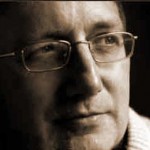Mark Egan, clerk to the committee, has sent an assurance that the emails to the Joint Human Rights Commission were in fact read, at least by the secretariat. Thanks to the correspondent who passed this on:
Thank you for your email to Andrew Dismore MP, Chair of the Joint Committee on Human Rights. Mr Dismore has asked me to reply.
The Committee staff received over 500 emails relating to Craig Murray’s request to give oral evidence to the Committee. All were read by the staff – I read many of them myself – and the Committee was informed of the number of emails we received and the nature of them.
The emails were deleted on Friday because Mr Dismore had replied to Mr Murray and indicated that people who had emailed the Committee should read his reply, and we needed to free up space in our inbox. We were not able to respond to each email individually because of the number we received.
Most of the emails were read using Outlook’s preview facility, which is why they were technically “unread” according to Outlook. Those which were opened properly were converted back to “unread” so that we could more easily count the total number we had received.
I hope this fully explains how we handled the Murray emails and deals with your suggestion of discourtesy.
Yours sincerely
Mark Egan, Commons Clerk, JCHR
I accept Mark Egan’s word on this. It remains the fact however that the Committee has still not agreed to hear my evidence.
Mark Egan should be receivng the signed top copy by registered post today. This bears repeating at every possible occasion: this is the signed statement I have sent to the Joint Committee and on which I wish to testify.
WITNESS STATEMENT TO THE PARLIAMENTARY JOINT COMMITTEE ON HUMAN RIGHTS
My name is Craig Murray. I was British Ambassador in Uzbekistan from August 2002 to October 2004.
I had joined the Diplomatic Service in 1984 and became a member of the Foreign and Commonwealth Office’s Senior Management Structure in 1998. I had held a variety of posts including Deputy High Commissioner, Accra (1998 to 2001) and First Secretary Political and Economic, Warsaw (1994 to 1997).
I had also been head of the FCO section of the Embargo Surveillance Sector leading up to and during the first Gulf War, monitoring and interdicting Iraqi attempts at weapons procurement. In consequence I had obtained security clearances even higher than those routinely given to all executive members of the Diplomatic Service. I had extensive experience throughout my career of dealing with intelligence material and the intelligence services.
It was made plain to me in briefing in London before initial departure for Tashkent that Uzbekistan was a key ally in the War on Terror and to be treated as such. It was particularly important to the USA who valued its security cooperation and its provision of a major US airbase at Karshi-Khanabad.
As Ambassador in Uzbekistan I regularly received intelligence material released by MI6. This material was given to MI6 by the CIA, mostly originating from their Tashkent station. It was normally issued to me telegraphically by MI6 at the same time it was issued to UK ministers and officials in London.
From the start of my time as Ambassador, I was also receiving a continual stream of information about widespread torture of suspected political or religious dissidents in Tashkent. This was taking place on a phenomenal scale. In early 2003 a report by the UN Special Rapporteur on Torture, in the preparation of which my Embassy much assisted, described torture in Uzbekistan as “routine and systemic”.
The horror and staggering extent of torture in Uzbekistan is well documented and I have been informed by the Chair is not in the purview of the Joint Committee on Human Rights. But what follows goes directly to the question of UK non-compliance with the UN Convention Against Torture.
In gathering evidence from victims of torture, we built a consistent picture of the narrative which the torturers were seeking to validate from confessions under torture. They sought confessions which linked domestic opposition to President Karimov with Al-Qaida and Osama Bin Laden; they sought to exaggerate the strength of the terrorist threat in Central Asia. People arrested on all sorts of pretexts ?” (I recall one involved in a dispute over ownership of a garage plot) suddenly found themselves tortured into confessing to membership of both the Islamic Movement of Uzbekistan (IMU) and Al-Qaida. They were also made to confess to attending Al-Qaida training camps in Tajikistan and Afghanistan. In an echo of Stalin’s security services from which the Uzbek SNB had an unbroken institutional descent, they were given long lists of names of people they had to confess were also in IMU and Al-Qaida.
It became obvious to me after just a few weeks that the CIA material from Uzbekistan was giving precisely the same narrative being extracted by the Uzbek torturers ?” and that the CIA “intelligence” was giving information far from the truth.
I was immediately concerned that British ministers and officials were being unknowingly exposed to material derived from torture, and therefore were acting illegally.
I asked my Deputy, Karen Moran, to call on a senior member of the US Embassy and tell him I was concerned that the CIA intelligence was probably derived from torture by the Uzbek security services. Karen Moran reported back to me that the US Embassy had replied that it probably did come from torture, but in the War on Terror they did not view that as a problem.
In October or November of 2002 I sent the FCO a telegram classified Top Secret and addressed specifically for the attention of the Secretary of State. I argued that to receive this material from torture was:
